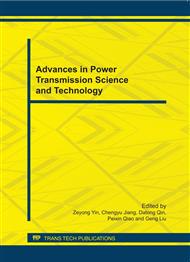p.619
p.623
p.629
p.633
p.637
p.641
p.645
p.649
p.653
An Accurate Modeling Method of the Plane Enveloping Hourglass Worm
Abstract:
This paper proposes a new method for creating the accurate 3D geometry model of the plane enveloping hourglass worm efficiently. The working tooth surfaces of the worm are enveloped by the mother plane surfaces. And according to the gear engagement theory, the equations of the surfaces enveloped are established. By combination with engineering practice, the geometrical features of the surface enveloped are analyzed, and one of its features is that it is a ruled surface consisted of countless straight lines which are contact lines. For ∑(u, Φ1), which represents the surface enveloped, let the variable u equals two values respectively, and two helix curves are gained. Connect the two curves with a ruled surface, and make sure that the ruled surface is consisted of contact lines. So the surface gained is a enveloped surface with no error existing in theory. Once the surfaces enveloped are gained, it’s easy to create the geometry model of the worm. Using UG, the paper provides an example showing how to create the worm’s model, and the new method and a past method are both used to create the model. The new method not only creates an accurate model, but also improves the efficiency. For example, at the time-consuming step for creating the surface enveloped, compared with the past method, the new method is able to save approximate 94% of the time.
Info:
Periodical:
Pages:
637-640
Citation:
Online since:
August 2011
Authors:
Keywords:
Price:
Сopyright:
© 2011 Trans Tech Publications Ltd. All Rights Reserved
Share:
Citation:


